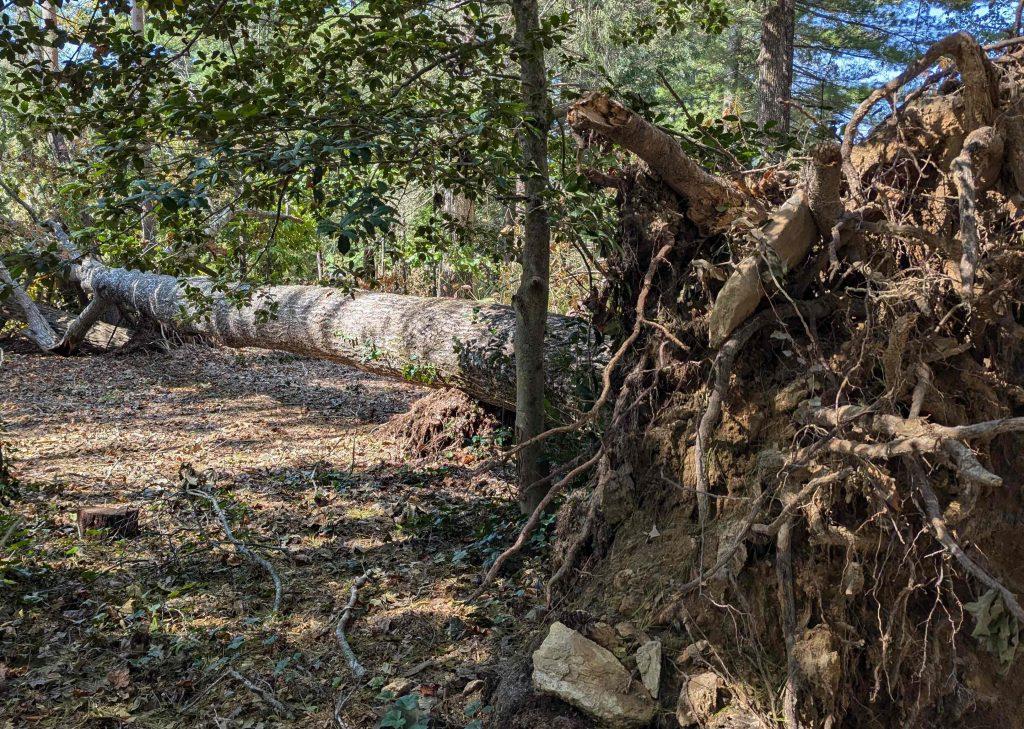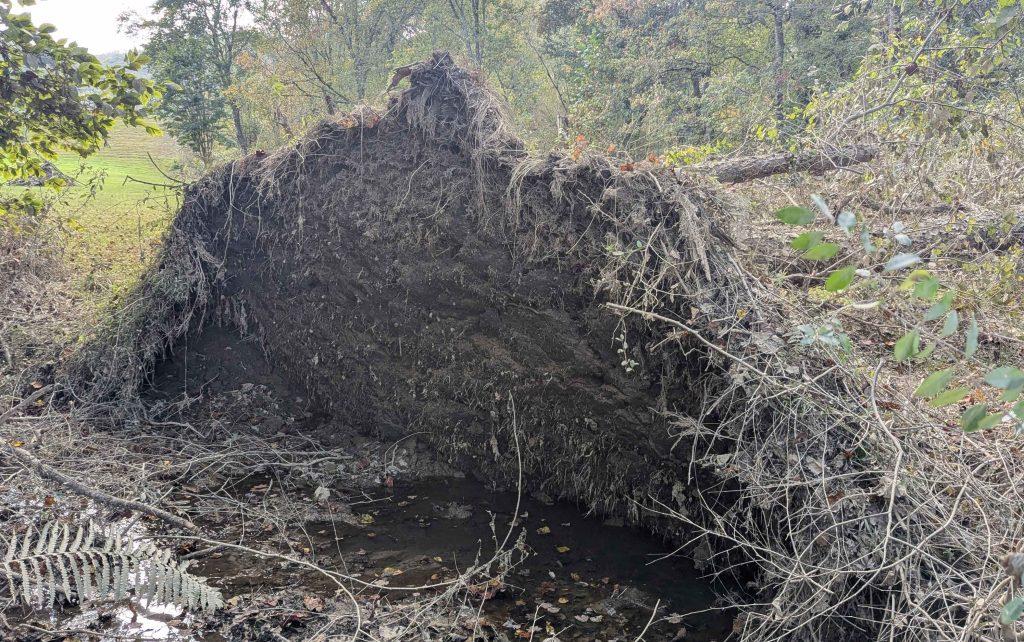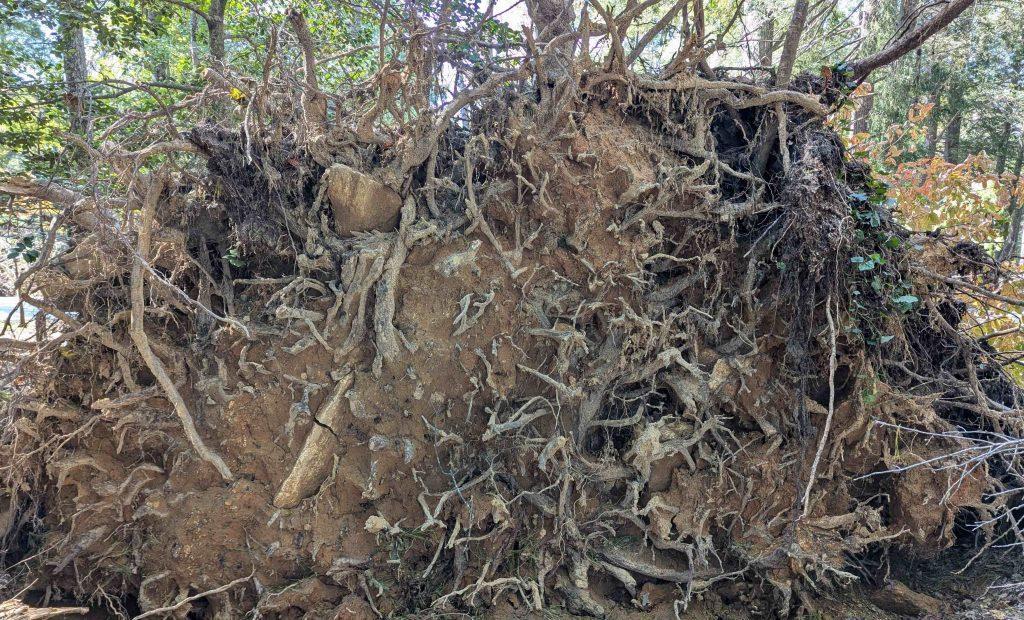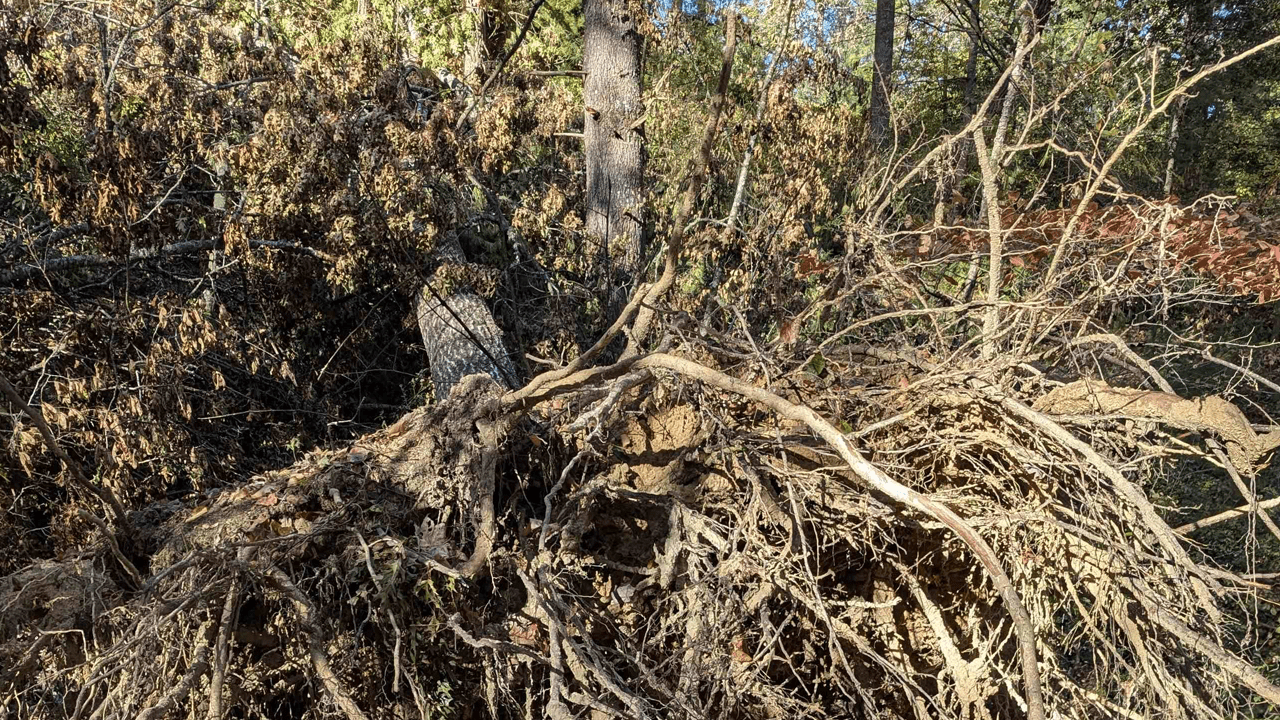Tropical storm Helene hit western North Carolina (Buncombe County) on 9/27/24 with rain amounts of 9.89” with winds of 45 to 60 mph. But that is not the whole story. One day before the storm hit, we had rain totally 4.09 inches. The saturated soils and high winds against full canopies of leaves caused massive root plate failure, resulting in many trees toppling over. Had the same rain and wind events hit even a month later, the catastrophic tree failures (and sadly, loss of life) would have been avoided.
With so many tree failures, I took the opportunity to conduct a sort of “triage” of tree condition. Of the 50 trees surveyed in Henderson County, 48% were oak species (red, white, scarlet and black), 20% were white pine, and the balance (32%) were a mix of hardwood and coniferous species including sourwood (5), Leyland Cypress (3), black walnut (2), black birch (2), black cherry (1), tulip poplar, (1) pignut hickory (1), and silver maple (1). The trees ranged in size from 6.5 to 41” in diameter.

But trees did fail, many bringing down power lines with them! For my part, after a week of clearing the mess on my own property and two of my neighboring properties, I embarked on categorizing the species, tree diameters, the root plate extent (or spread) and depth of rooting. I canvassed Henderson County from Etowah and Horse Shoe to Laurel Park and Fletcher, and a bit of Mills River, Dana, and Hoopers Creek. I took data from roadside trees, avoiding, trees on private properties (so I wouldn’t get shot!) and trees tangled with power lines. Here’s what I found:
Tree roots are relatively shallow, but range widely. The average tree of 20” diameter in this survey had root plates of 28” depth. The root spread however, was on average, 140 inches! Now the population of trees ranged widely as well (from 6.5 to 41”) in diameter. The range of root depth was anywhere from 8 to 55” in depth. The root plate or lateral extent of rooting varied from 72 to 278 inches! This configuration may be likened to a Christmas tree in a stand. Tall with broad foliage, yet easily toppled! The trees that failed were along the road adjacent to drainage ditches. It is reasonable to assume that the roots were impacted by road work or ditch excavations, damaging their structural integrity.

What then can you do to avoid this sort of thing from happening? There may not be much you can do for street trees, but you can care for trees near your home. Begin with the understanding that tree roots are shallow. It makes sense that they are. It is in the upper layers of soil that gas exchange occurs, and deposition of organic matter occurs.
Gas exchange means that roots respire carbon dioxide, but also depend on oxygen to absorb. Organic matter supports roots and mycorrhizae, an association that made it evolutionarily possible for simple ocean plants to become land plants and in time, trees! Management then requires this awareness. Avoid soil compaction under the critical root zone. Roughly this means that for every inch of tree diameter at breast height (DBH), you want to allow for 7x root spread. For example, a 10 DBH inch tree needs 35” radial root spread. This is the functional area to mulch with organic matter including compost and wood chips.


If your tree has seen some prolonged flooding, I’d advise a drench of phosphite around the critical root zone (CRZ). An example to use is a soil drench of 188 to 382 mLs of PHOSPHO-jet (45.8% Mono-and di-potassium salts of Phosphorous Acid) per gallon of water. Apply a sufficient quantity of solution to protect the CRZ of the tree. Of course, always follow label directions. But why treat with a phosphite? When roots are in flooded soils, the conditions in the root zone can become anaerobic. Such a condition opens infection to Phytophthora spp., a root rot. The optimum use of phosphite is as a preventative, so ought to be made soon after extreme rain events.
Join us next time for…well, whatever we have in store for 2025!
~ Signing off for now, Joe

